Science
Related: About this forumCan copper be "green?"
The paper to which I'll refer in this post is this one: Regulation Mechanism for Designing Decarbonization Pathways in the Copper Industry Toward Carbon Neutrality Yifan Gu, Hongyang Yang, Yufeng Wu, Mingxuan Tuo, Ming Xu, Guangwen Hu, and Tieyong Zuo Environmental Science & Technology 2024 58 (3), 1518-1530
One doesn't need to be a chemist to recognize that in its most common oxidized state, Cu+2, copper is generally green. Statues, copper roofing, plumbing show as much. (Complexed with ammonia, though, Cu+2 is brilliant blue.) In this sense nothing has to be done to make copper "green" other than to oxidize the, um, copper colored familiar metal.
Originally the word "green" referred to a color of course, but in a modern sense the word as become, often in abuse as opposed to legitimate use, by appeal to the color of chlorophyl, for something that is environmentally sustainable. For example, the gas with the third lowest critical temperature, the property that it is incompatible with many metals, and which must be manufactured by the use of vast environmentalist and unsustainable exergy destruction, hydrogen, is often described as "green hydrogen," often by fossil fuel sales people and salesbots, here and elsewhere, trying to rebrand their products, dangerous fossil fuels, as "green." Of course, not even chlorophyl is necessarily "green" in this sense. There are very real and very frightening questions about the sustainability of agriculture, for example, and even forestation and afforestation, as I noted in a recent post, has dire limitations, particularly in connection with land use, as I noted in a recent post in this space.
The issue as to what is and is not "sustainable" is admittedly complex, and is the subject of an ongoing debate and refinement. I have drawn my own conclusions from studying this debate, one of which is that we are not going to mine our way out climate change, nor are we going to address it by industrializing every square inch of the planet because ecosystems are expendable because they're not put to energy use. One example now familiar is the riverine ecosystem - major free rivers are in the 21st century almost unknown. Another is the benthic ecosystem - Norway's decision to allow mining at sea is the first shot across the bow in what is sure to be a disastrous pattern - and those people wanting to industrialize the continental shelf seabed with wind industrial parks disgust me as do offshore oil and platforms, one having done vast damage to the entire Gulf of Mexico.
I note that the "green" critic of nuclear energy, Benjamin Sovacool, an appalling badly educated myopic fool in my opinion, seems to be fine with deep sea mining for "green" so called "renewable energy:" Sustainable minerals and metals for a low-carbon future Sovacool et al, Science 3 Jan 2020 Vol 367, Issue 6473 pp. 30-33
This spake Sovacool:
This statement is very, very, very dangerous tripe.
That boy has a very poor understanding of what the word "sustainable" might mean.
There are 90 naturally occurring elements in the periodic table including those that are radioactive, including the one subject to fission, spontaneous or induced. There is more to the environment than carbon, kiddie, and tearing the shit out of the ocean floor to get at some of them because of a failed approach to addressing one of them, carbon, represents a huge indifference to sustainability.
Here's a clue for you Benji boy, about what so called "renewable energy," has done for us in the 21st century with respect to carbon, nothing at all:
Weekly value from 1 year ago: 419.72 ppm
Weekly value from 10 years ago: 398.08 ppm
Last updated: February 04, 2024
Weekly average CO2 at Mauna Loa. The number week of January 28, 2024, last week, is 53.04 ppm higher than it was in the week beginning January 30, 2000, around the time people started throwing serious money at the reactionary "renewable energy will save us" cults.. Things are getting worse, faster. Little Benji seems to have a problem with something called "data" and apparently can't define what "low carbon" even means.
Perhaps one of the most important elements in the periodic table with respect to energy is copper, because of its remarkable electrical conductivity, exceeded only to the rarer elements silver and gold. It is generally conceded to be an available element, and it has been so through most of human history, but centuries of mining and refining it have raised the question of whether this will remain so for even a few generations. It is worthy of note that the more dilute an ore (or recycling source) is, the more energy that will be required to obtain it.
The authors of the paper under discussion are based in China, but the issues they discuss apply to the entire world; it takes energy to obtain copper, and overwhelmingly that energy is supplied by the combustion of dangerous fossil fuels.
From the introduction:
Copper resources are highly valued for their thermal and electrical conductivity, plasticity, and ductility and are expected to play a crucial role in the transformation of the global power structure. It is estimated that the global demand for refined copper resources will increase to about 62.0 Mt by 2050, which is a 1.6-fold increase compared to 2020. (3) The exploitation of copper resources is complex and involves several links, such as mining, refining, and processing, all of which are energy-demanding and produce GHG emissions. The energy consumption of mining and refining is approximately 0.50 and 0.31 tce/t product, respectively. (4) In recent years, technologies such as oxygen-enriched bottom-blowing copper matte continuous converting and the cosmelting of primary and secondary copper resources have been developed to improve the energy efficiency of the copper industry. For example, in the process of continuous converting using three consecutive furnaces, the comprehensive energy consumption of crude copper is less than 0.10 tce/t product, while the recovery from refined copper to electrolytic copper can reach 99%. (5) However, technology evolution can only reduce GHG emissions intensity. To achieve the goal of carbon neutrality in the copper industry, a collaborative approach integrating international trade, circular economy, technology evolution, and the environmental market is required.
Note the use of the conditional word "would." The idea that "electrification of energy will be "green," to use the abused word, is dependent on whence the electricity comes. Right now, it is overwhelmingly generated by the combustion of fossil fuels, and most often using Rankine cycle devices - although Brayton cycles are used in some dangerous natural gas "combined cycle" plants - but hardly all dangerous natural gas powered plants. Rankine devices generally have an energy efficiency of around 33% depending on ambient temperatures - slightly higher in cold weather, slightly lower in hot weather.
Electricity is a thermodynamically degraded form of energy.
Anyway, the "electrify everything" objective is soothsaying and does not correspond to reality and if it did, it would be a bad idea, just like storing electricity is a bad idea, both as a consequence of the laws of thermodynamics which cannot, and will not be repealed no matter how much wishful thinking rhetoric is applied to reality.
As for the soothsaying "percent talk," 45-50% "by 2050" may not involve the use of less fossil fuels to burn to make electricity, since one may be using more than 100% more electricity in 2050 as opposed to 2024, especially in "electrify everything" scenarios.
Anyway, the authors lay out a proposal for making copper "green," in the abused sense of the word.
Some graphics from the text:
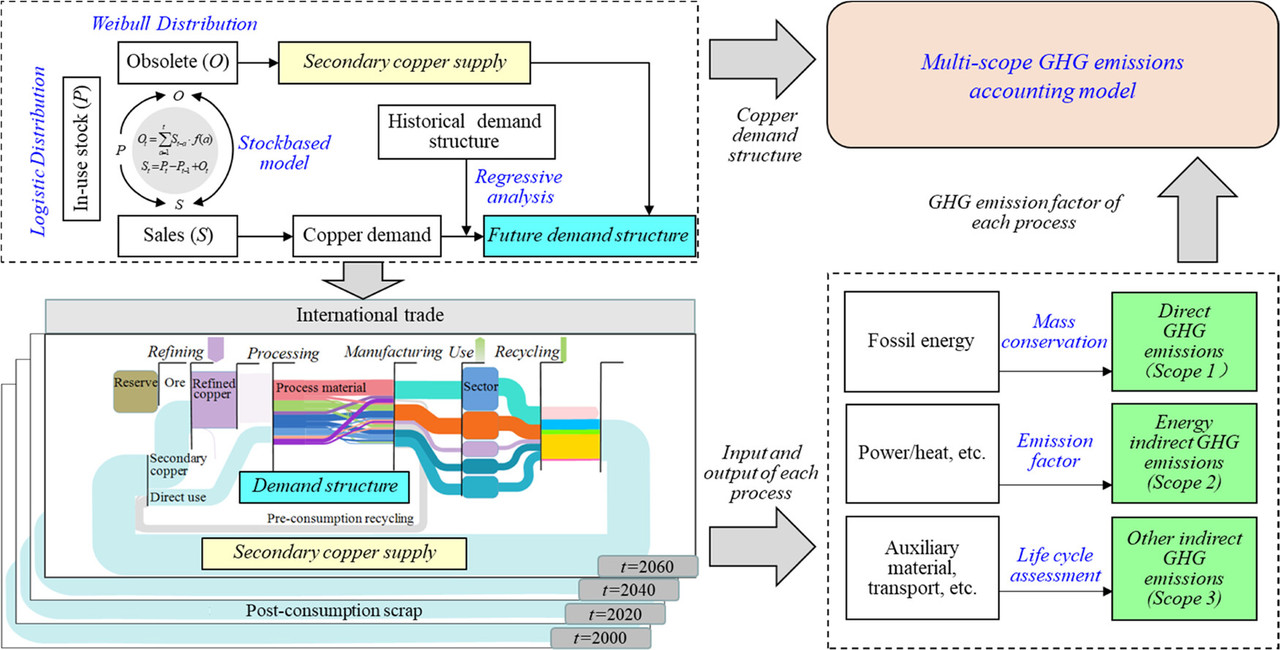
The caption:
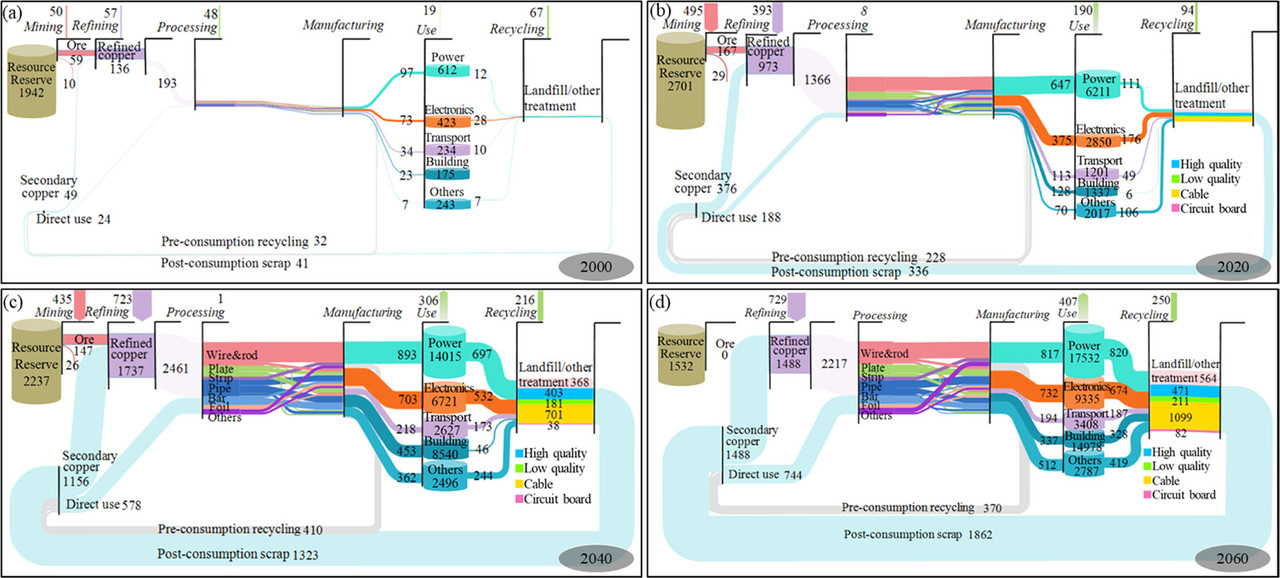
The caption:
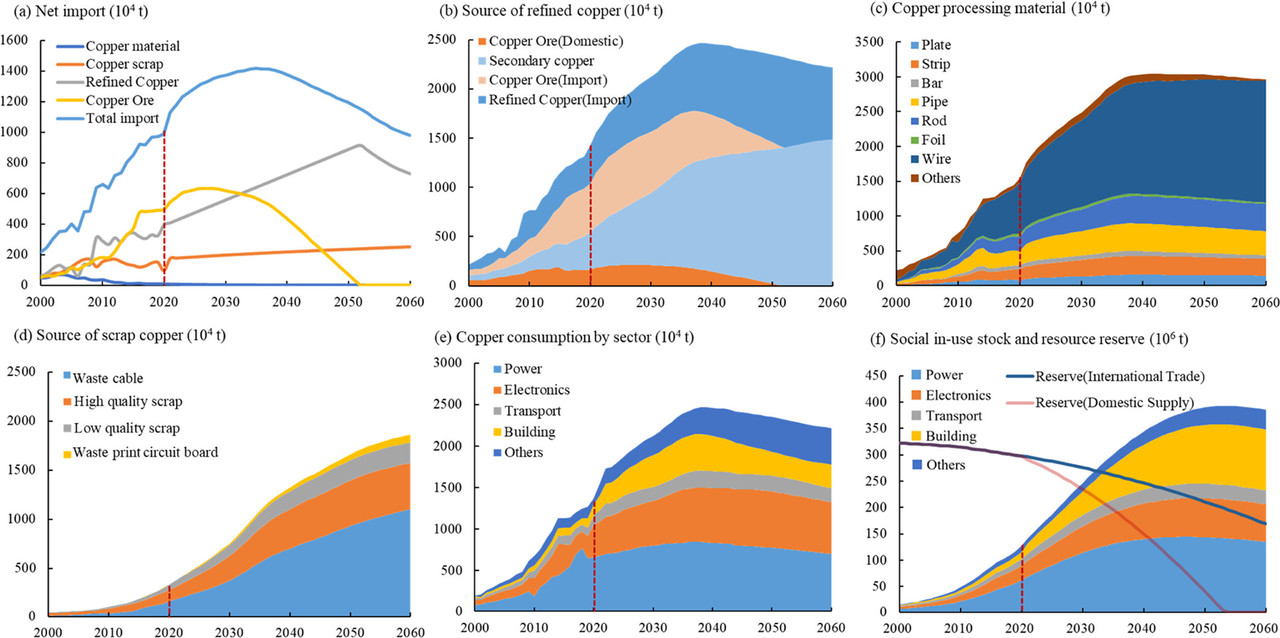
The caption:
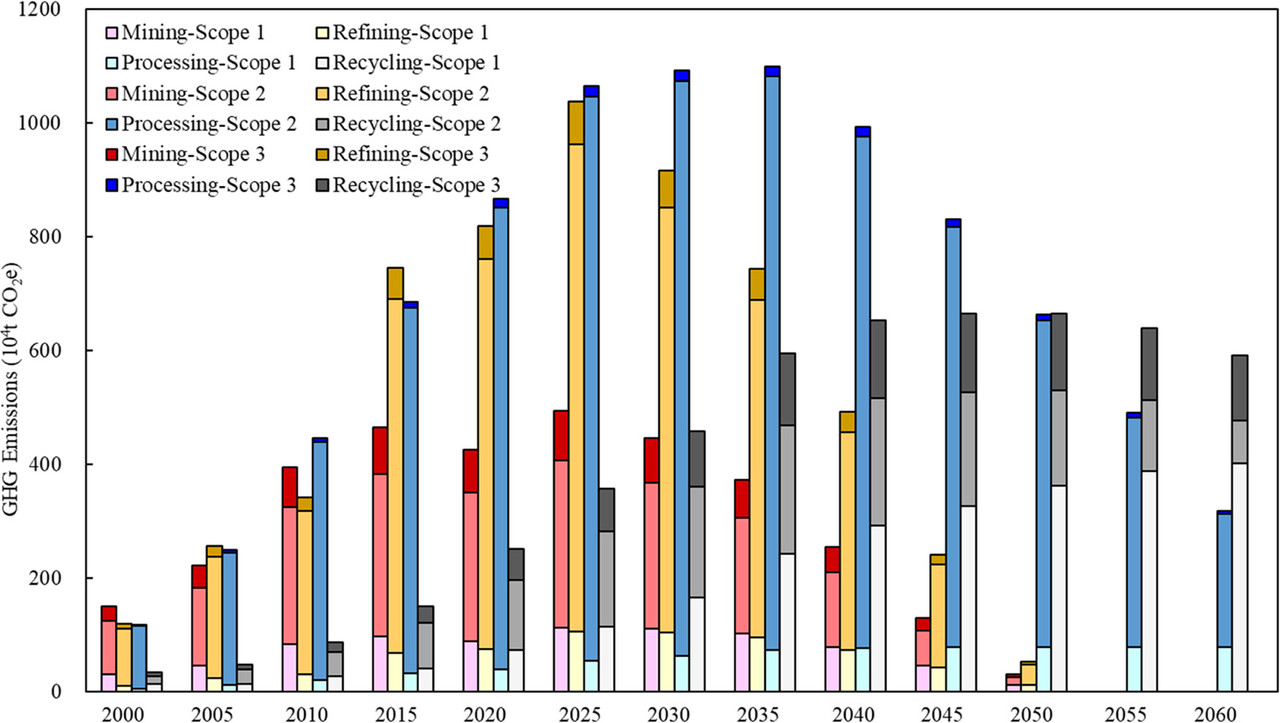
The caption:
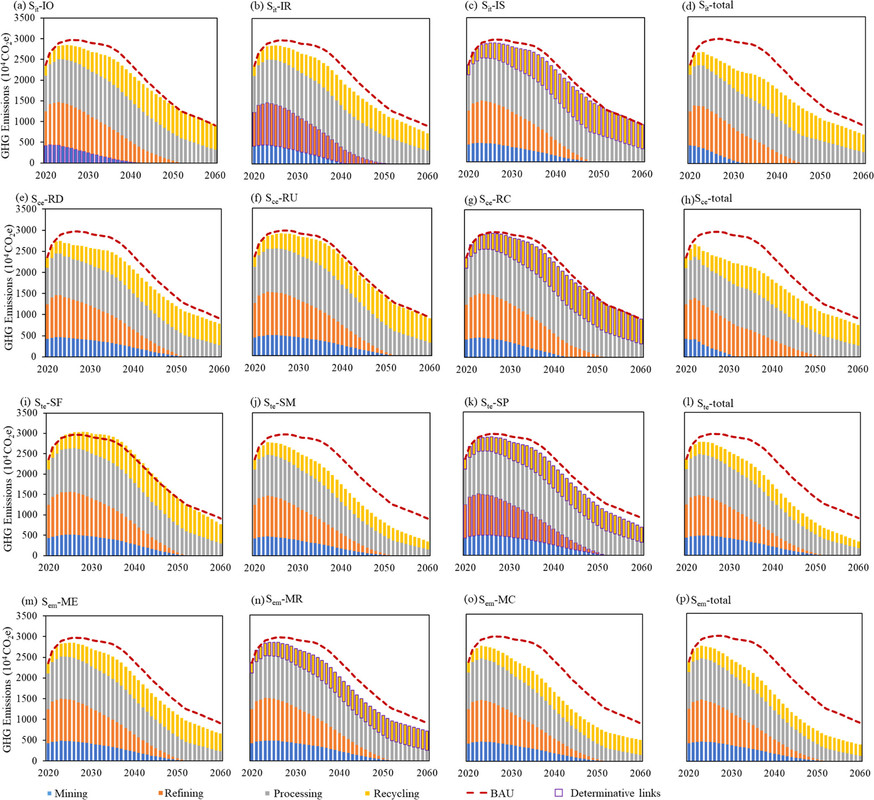
The caption:
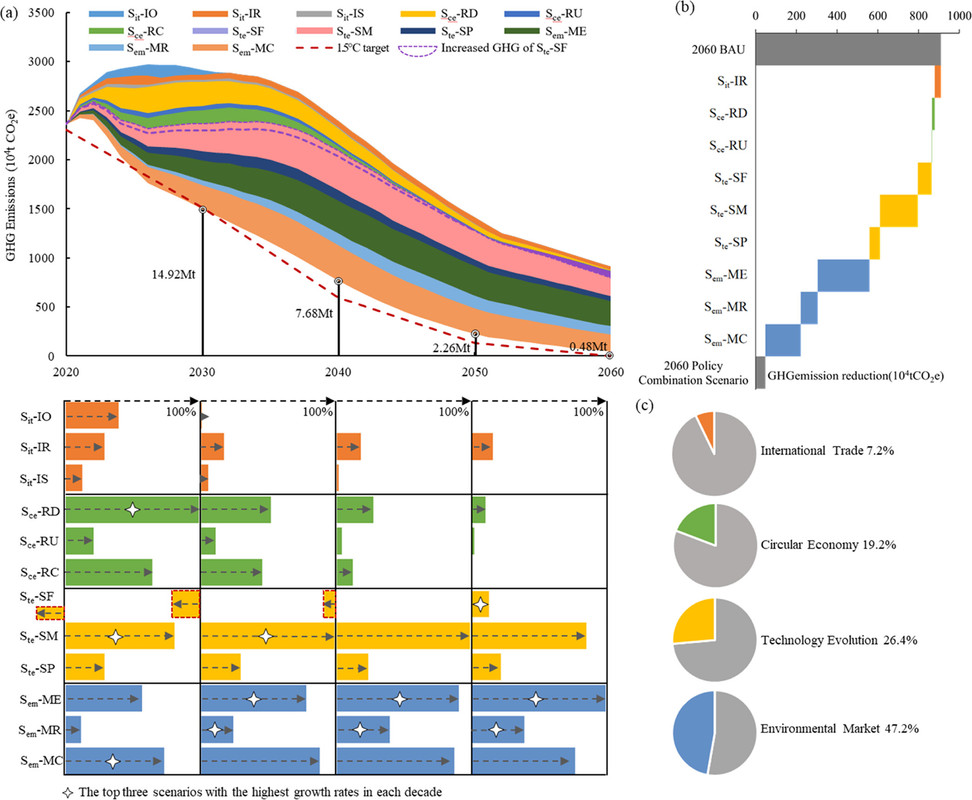
The caption:

The caption:
Since the use and abuse of language is a subtext of this post, it behooves me to comment on that word "scenario." A better word, in my view, and the one I use often is "soothsaying." The optimistic scenarios/soothsaying is an argument that future generations will do what we have not done ourselves, this with all of the best ores already mined and often toxic tailings left behind, with a destroyed atmosphere and vast stretches of once virgin wilderness transformed into the rotting hulks of "renewable energy" industrial plants, a destroyed atmosphere, extended deserts, the burned remains of forests and dried up rivers.
Reality...
Here is table 1 from the paper, referring to all the wonderful stuff that is supposed to happen to make copper "green:"
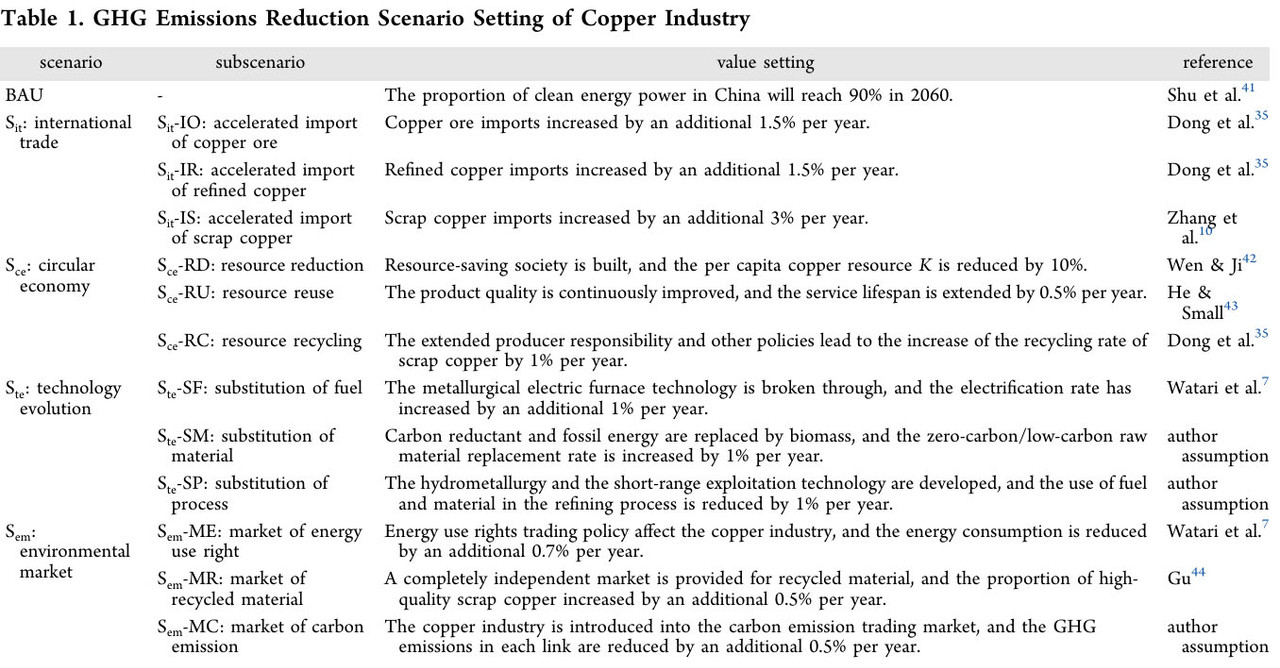
One of the more amusing bits in these scenarios that are supposed to all fall together that is supposed to translate into the grand "renewable energy" nirvana implied for the "energy transition" unicorn that is often alleged to exist now although it's hard to see any effect on climate change, is the reference to biomass, a reference also found in the text.
This scenario/soothsaying may involve strip mining forests, assuming they haven't all burned spontaneously in extreme heat and drought, or it may involve condemning lots of people to starvation to grow biofuels, but both are dependent on access and availability of an already strained resource other than energy, water.
In the popular press there's an account of the inability to mine copper because of a lack of access to just that, water:
Aridity Could Dry Up Southwestern Mine Proposals
Subtitle:
There’s that mythical “energy transition” again dubiously utilized with the word “clean,” this in reference to the ability to tear the shit out the Earth with mining to be “green.”
The use of language is atrocious in these times, and again, perhaps it's not “use” at all but rather abuse.
A few years back, power lines in California sparked during an extreme unquestionably climate driven drought and huge fines were directed at PSE&G for their irresponsibility for having, um, power lines. Of course, the reason that California has so many power lines is because it has built so many unreliable energy plants, given the fetish there for solar and wind energy. When the wind isn't blowing, or the sun isn't shining, all those wires containing all that copper is a stranded asset. It takes a lot of wires to connect all that unreliable and unpredictable shit.
The Diablo Canyon nuclear plant, on a foot print of less than 12 acres including the parking lots, has far less copper in its two generators than the wind turbines scattered over more than 1500 square miles of industrialized wilderness in that state.
In 2022, the last year for which the California Energy Commission has posted data, the Diablo Canyon plant generated more electricity than all the wind turbines in California, 17,627 GWh (63.5 Petajoules) for the Diablo Canyon plant, 13,938 GWh (50.2 Petajoules) for wind. In the "percent talk" that antinukes use to obscure the miserable failure of so called "renewable energy" this is 79.1% as much as was produced on 12 acres and vastly less copper.
California 2022 Total System Electric Generation
If there's any "energy transition" going on, it's a transition from bad to worse.
I trust you'll have a pleasant Sunday evening.
Fullduplexxx
(7,864 posts)RussellCattle
(1,535 posts)……carbon emissions from industrial processes (your posts being a significant exception) and share your exasperation with “clean electricity” coming from fossil fuel generating plants.
Did you not once, a while back, make a point about the limitations of wind and tidal power sources for industrial processes that made use of the energy conservation of continuous processes rather than batch process. I think it was in relation to aluminum smelting, though like you have explained here, a series of furnaces is an energy saving strategy.
Bernardo de La Paz
(49,007 posts)Some call it pink or purple hydrogen, but regardless it is not sourced from fossil fuels.
NNadir
(33,525 posts)In theory, but not in practice, captive hydrogen can be made by exergy capture using thermochemical cycles. General Atomics in the US explored this in the 1960's and 1970's, and recently, if I recall correctly, the Chinese explored the SI cycle on their HTGC-10 reactor.
If however, someone makes hydrogen using electricity using the thermodynamically and economically unviable process of electrolysis, unless a grid is 100% nuclear, which no grids on this planet are, not even France, than one is simply playing a shell game, wasting electricity electrolysis of water while burning fossil fuels to make up the difference elsewhere.
I analyzed the details along these lines elsewhere:
A Giant Climate Lie: When they're selling hydrogen, what they're really selling is fossil fuels.
Electricity is thermodynamically degraded and making hydrogen from it degrades it even further. Even if the mythical "green hydrogen" existed on any scale - it doesn't - it would be a very, very, very, very, very poor choice for a consumer product. It has horrible physical properties, not the least of which are extremely low viscosity and incompatibility with many metals via the well known issue of hydrogen embrittlement.